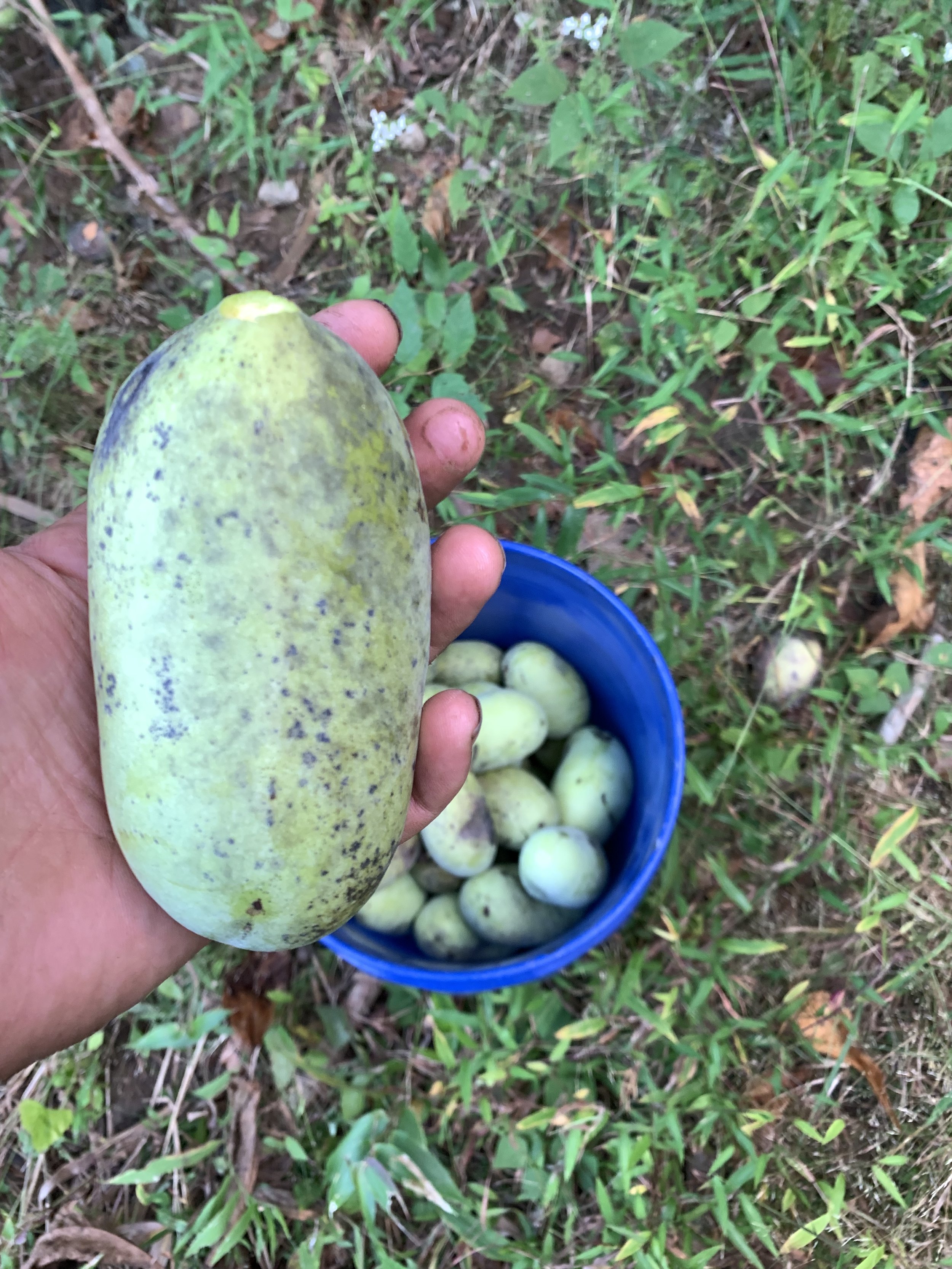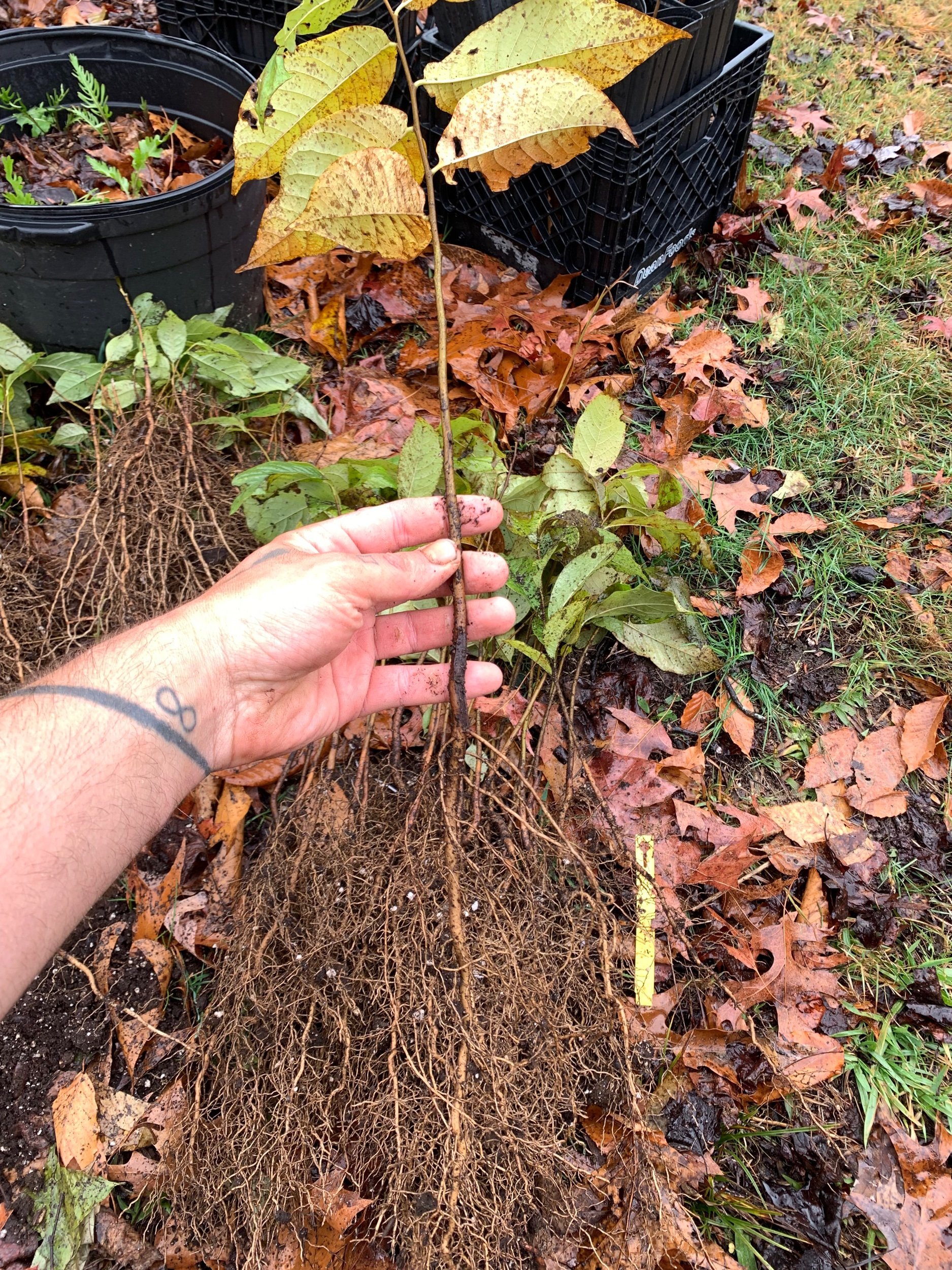 Image 1 of 3
Image 1 of 3

 Image 2 of 3
Image 2 of 3

 Image 3 of 3
Image 3 of 3




Pawpaw
Hardiness: zone 4-9, will grow with least care in zone 6 and up.
North America’s largest native fruit. The flavor can range from mango pineapple custard, to avocado vanilla, to deep ripe banana. High fat content makes the fruit very perishable, so can really only be enjoyed fresh or frozen. Our seedlings come from very high quality large wild pawpaws, or from named varieties planted in orchards. The seedlings will make high quality fruit as per the parents, with some genetic variability. Pawpaws are naturally thicket forming and suckering, but need at least one other genetically distinct tree to pollinate and make fruit. Pawpaws are very resilient when established, but can benefit from a few things to help them reach a bearing age:
-be very careful not to damage the taproot when planting
-provide some shade in the first year or two after planting. this can be as simple as planting them to the north of a nurse plant or tall growing herbaceous perennial. This is not strictly necessary; I have also grown them with no protection from the sun, but it’s worth it to give them that bit of help
-keep up with mulching and watering especially in the first couple of years
Hardiness: zone 4-9, will grow with least care in zone 6 and up.
North America’s largest native fruit. The flavor can range from mango pineapple custard, to avocado vanilla, to deep ripe banana. High fat content makes the fruit very perishable, so can really only be enjoyed fresh or frozen. Our seedlings come from very high quality large wild pawpaws, or from named varieties planted in orchards. The seedlings will make high quality fruit as per the parents, with some genetic variability. Pawpaws are naturally thicket forming and suckering, but need at least one other genetically distinct tree to pollinate and make fruit. Pawpaws are very resilient when established, but can benefit from a few things to help them reach a bearing age:
-be very careful not to damage the taproot when planting
-provide some shade in the first year or two after planting. this can be as simple as planting them to the north of a nurse plant or tall growing herbaceous perennial. This is not strictly necessary; I have also grown them with no protection from the sun, but it’s worth it to give them that bit of help
-keep up with mulching and watering especially in the first couple of years
Hardiness: zone 4-9, will grow with least care in zone 6 and up.
North America’s largest native fruit. The flavor can range from mango pineapple custard, to avocado vanilla, to deep ripe banana. High fat content makes the fruit very perishable, so can really only be enjoyed fresh or frozen. Our seedlings come from very high quality large wild pawpaws, or from named varieties planted in orchards. The seedlings will make high quality fruit as per the parents, with some genetic variability. Pawpaws are naturally thicket forming and suckering, but need at least one other genetically distinct tree to pollinate and make fruit. Pawpaws are very resilient when established, but can benefit from a few things to help them reach a bearing age:
-be very careful not to damage the taproot when planting
-provide some shade in the first year or two after planting. this can be as simple as planting them to the north of a nurse plant or tall growing herbaceous perennial. This is not strictly necessary; I have also grown them with no protection from the sun, but it’s worth it to give them that bit of help
-keep up with mulching and watering especially in the first couple of years